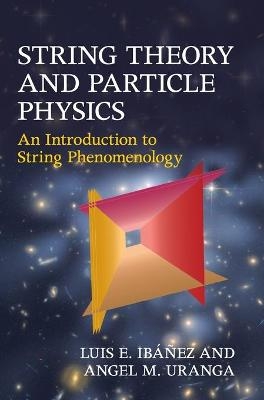
String Theory and Particle Physics
Cambridge University Press (Verlag)
9780521517522 (ISBN)
String theory is one of the most active branches of theoretical physics and has the potential to provide a unified description of all known particles and interactions. This book is a systematic introduction to the subject, focused on the detailed description of how string theory is connected to the real world of particle physics. Aimed at graduate students and researchers working in high energy physics, it provides explicit models of physics beyond the Standard Model. No prior knowledge of string theory is required as all necessary material is provided in the introductory chapters. The book provides particle phenomenologists with the information needed to understand string theory model building and describes in detail several alternative approaches to model building, such as heterotic string compactifications, intersecting D-brane models, D-branes at singularities and F-theory.
Luis E. Ibáñez is Professor of Theoretical Physics at the Universidad Autónoma de Madrid and member of the Instituto de Física Teórica-UAM/CSIC. One of the world leaders in physics beyond the Standard Model of particle physics, he has made important contributions to the construction of the supersymmetric Standard Model and superstring phenomenology. Angel M. Uranga is Research Professor at the Consejo Superior de Investigaciones Científicas at the Instituto de Física Teórica-UAM/CSIC. He is one of the leading young string theorists working in the construction of models of particle physics, in particular due to his contribution on the use of D-branes to build realistic brane-world models.
Preface; 1. The standard model and beyond; 2. Supersymmetry; 3. Introduction to string theory: the bosonic string; 4. Superstrings; 5. Toroidal compactification of superstrings; 6. Branes and string duality; 7. Calabi–Yau compactifications of heterotic superstrings; 8. Heterotic string orbifolds and other exact CFT constructions; 9. Heterotic string compactifications: effective action; 10. Type IIA orientifold compactifications: intersecting brane worlds; 11. Type IIB orientifold compactifications; 12. Type II compactifications: effective action; 13. String instantons and effective field theory; 14. Flux compactifications and moduli stabilization; 15. Moduli stabilization and supersymmetry breaking in string theory; 16. Further phenomenological properties. Strings and cosmology; 17. The space of string vacua; Appendices; Index.
| Erscheint lt. Verlag | 9.2.2012 |
|---|---|
| Zusatzinfo | 64 Tables, black and white; 109 Line drawings, unspecified |
| Verlagsort | Cambridge |
| Sprache | englisch |
| Maße | 175 x 249 mm |
| Gewicht | 1480 g |
| Themenwelt | Naturwissenschaften ► Physik / Astronomie ► Hochenergiephysik / Teilchenphysik |
| Naturwissenschaften ► Physik / Astronomie ► Thermodynamik | |
| ISBN-13 | 9780521517522 / 9780521517522 |
| Zustand | Neuware |
| Informationen gemäß Produktsicherheitsverordnung (GPSR) | |
| Haben Sie eine Frage zum Produkt? |
aus dem Bereich


